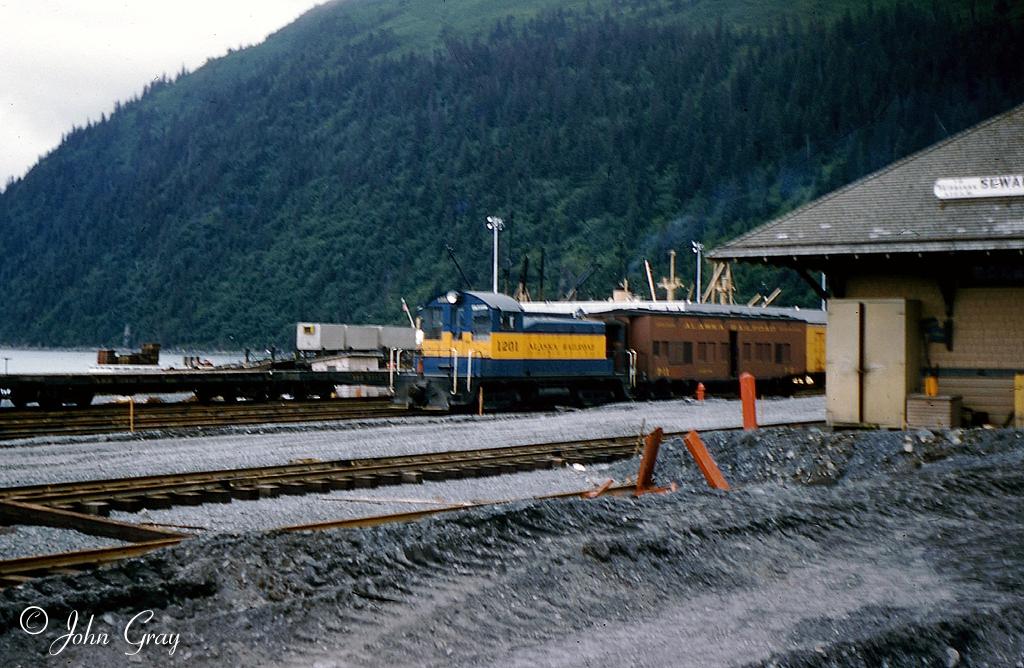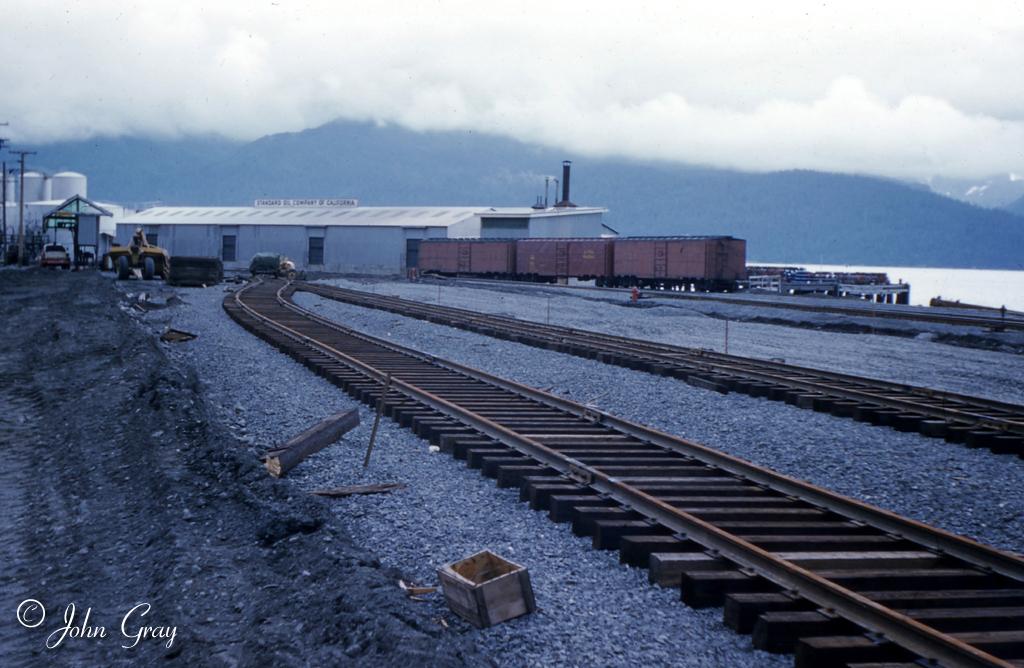

Seward #1201 with power car P-11 - Taken August 1957. At this
time the railroad was finally rebuilding Seward into a more useable terminal.
They had delayed rebuilding the terminal and the Portage - Seward line during
the main part of the post-war rehabilitation trying to figure out a way to
use only Whittier for both commercial business and the military. When it was
finally settled that this would not work the rehab work was begun south of
Portage. The work in Seward included two new docks that could be used for
the container business that ARR was developing with Alaska Steamship as well
as a new support yard. At the time both Standard Oil (of California-Chevron
today) and Texaco were using Seward to bring in petroleum products from the
states. The oil and container business supported a daily freight (#27 and
28) which ran up to Anchorage every evening. Train 28 did a pick-up in Portage
(and 27 a set-out) that was Whittier business taken to or from the junction
by one, or more turns operated by a pair of the RS-1's every day. Prior to
the arrival of the F-7's, when the RS-1's and RF-1's were still doing all
the work, there were two
daily Seward freights each way (#27,28,29,30). After the F-7's arrived four
to six of them took care of all the business in one trip.
The background in this photo is very important in terms of modern rail technology history. The dock area behind 1201 has the second operating, on-dock container terminal in the United States (Skagway was the first two years earlier). From this small beginning would grow the huge facilities now in place in Los Angeles, Oakland, Tacoma and Seattle. P-11 is another important part of this picture. It was used to power the refrigerated units (in summer) and the heater units (in winter) on the insulated 24' containers, a tradition that continues to the present on ARR. Thus, this slide may be one of the most important that my father ever took since it portrays the birth of a technology that was to become critical to the survival and health of the US rail industry.
Unfortunately, of course, everything in this scene, as well as the newly rebuilt Seward yard, was destroyed during the 1964 earthquake. I have included another slide looking the opposite direction that shows the Seward yard under construction.